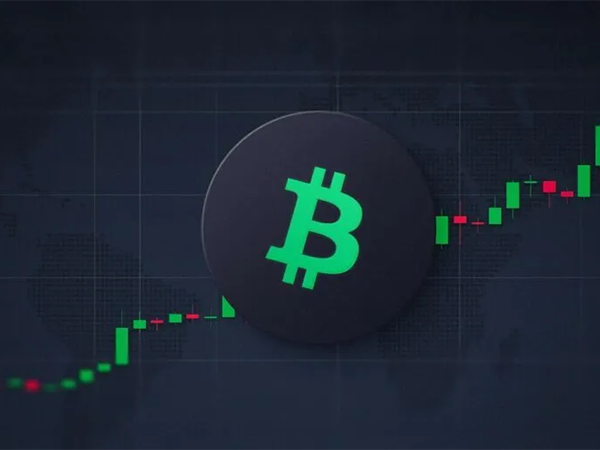What Is Crypto Trading? A Beginner’s Guide to Buying and Selling Digital Assets

Cryptocurrency trading has exploded in popularity, attracting millions of investors worldwide. But for beginners, the world of crypto can seem overwhelming—filled with complex terms, volatile price swings, and countless trading strategies.
This comprehensive guide will explain:
-
What crypto trading is and how it works
-
Different types of cryptocurrency trading (spot, futures, margin, etc.)
-
Step-by-step instructions for beginners
-
Best exchanges, tools, and strategies
-
Risks to avoid and how to trade safely
By the end, you’ll have a clear understanding of how to start trading cryptocurrencies confidently and securely.
1. What Is Cryptocurrency Trading?
Definition
Crypto trading is the act of buying and selling digital assets (like Bitcoin, Ethereum, and altcoins) to profit from price movements. Unlike long-term investing (HODLing), traders aim to capitalize on short-term market fluctuations.
How Does It Work?
-
Choose a cryptocurrency exchange (e.g., Binance, Coinbase, Kraken).
-
Deposit funds (fiat money or crypto).
-
Place buy/sell orders based on market analysis.
-
Monitor trades and close positions for profit (or loss).
Key Concepts Every Trader Should Know
-
Volatility: Crypto prices can swing rapidly.
-
Liquidity: How easily an asset can be bought/sold.
-
Order Types: Market, limit, stop-loss orders.
-
Trading Pairs: BTC/USDT, ETH/BTC, etc.
2. Types of Cryptocurrency Trading
A. Spot Trading (Simplest Form)
-
Buy/sell crypto at current market prices.
-
Own the asset (you hold the actual Bitcoin, Ethereum, etc.).
-
Best for beginners due to simplicity.
Example: Buy Bitcoin at $30,000 and sell at $35,000.
B. Futures Trading (Advanced, High Risk)
-
Trade contracts based on future crypto prices.
-
Use leverage (borrowed funds) to amplify gains (or losses).
-
No ownership of the underlying asset.
Example:
Open a 10x long BTC futures position at $30,000.
If BTC rises to $33,000, your profit is 3x (minus fees).
C. Margin Trading (Borrowed Funds)
-
Trade with leverage (2x, 5x, 10x, etc.).
-
Risk of liquidation if the market moves against you.
Example:
Deposit $1,000, borrow $4,000 (5x leverage).
If the trade wins, profits are magnified—but losses are too.
D. Day Trading vs. Swing Trading
| Strategy | Timeframe | Risk Level |
|---|---|---|
| Day Trading | Seconds to hours | High (requires constant monitoring) |
| Swing Trading | Days to weeks | Medium (less stressful) |
| Scalping | Seconds to minutes | Very High (fast-paced) |
3. How to Start Crypto Trading (Step-by-Step Guide)
Step 1: Choose a Reliable Exchange
-
Best for Beginners: Coinbase, Binance, Kraken
-
Best for Advanced Traders: Bybit, OKX, BitMEX
Factors to Consider:
-
Fees (trading, withdrawal, deposit)
-
Security (2FA, cold storage, insurance)
-
Supported coins (BTC, ETH, altcoins)
Step 2: Fund Your Account
-
Bank transfer (slow but low fees)
-
Credit/debit card (instant but high fees)
-
Crypto deposit (transfer from another wallet)
Step 3: Learn Basic Order Types
-
Market Order: Buy/sell instantly at current price.
-
Limit Order: Set a custom buy/sell price.
-
Stop-Loss Order: Automatically sell if price drops.
Step 4: Start with Small Trades
-
Avoid going “all-in” on one trade.
-
Use demo accounts (Binance, Bybit offer practice modes).
Step 5: Monitor & Adjust
-
Track your trades with apps like CoinMarketCap.
-
Set profit targets and stick to them.
4. Best Crypto Trading Strategies for Beginners
A. Dollar-Cost Averaging (DCA)
-
Invest fixed amounts regularly (e.g., $100 weekly in BTC).
-
Reduces risk of buying at peak prices.
B. Trend Trading
-
“Buy the uptrend, sell the downtrend.”
-
Use indicators like Moving Averages (MA), RSI.
C. Breakout Trading
-
Buy when price breaks resistance.
-
Sell when support is broken.
D. Arbitrage
-
Exploit price differences across exchanges.
Example: Buy BTC on Coinbase (lower price), sell on Binance (higher price).
5. Risks of Crypto Trading & How to Avoid Them
A. Market Volatility
-
Prices can crash 20%+ in hours.
Solution: Use stop-loss orders.
B. Scams & Hacks
-
Fake exchanges, phishing attacks.
Solution: Only use verified platforms (Binance, Coinbase, Kraken).
C. Leverage Risks
-
High leverage = higher liquidation risk.
Solution: Start with low leverage (2x–5x).
D. Emotional Trading
-
Fear & greed lead to bad decisions.
Solution: Follow a trading plan.
6. Best Tools for Crypto Traders
| Tool | Purpose |
|---|---|
| TradingView | Chart analysis |
| CoinGecko | Market data |
| Blockfolio | Portfolio tracker |
| Glassnode | On-chain analytics |
7. Conclusion: Should You Start Crypto Trading?
Good For:
-
Those willing to learn & research.
-
Investors comfortable with risk & volatility.
Avoid If:
-
You expect “get rich quick” schemes.
-
You can’t afford to lose money.
Final Tips:
-
Start small & practice first.
-
Use secure exchanges (Binance, Coinbase).
-
Never trade with money you can’t afford to lose.
FAQ: Crypto Trading Basics
Q: How much money do I need to start crypto trading?
A: As little as $10 (some exchanges allow micro-investing).
Q: Is crypto trading profitable?
A: Yes, but risky—90% of traders lose money due to poor strategies.
Q: What’s the best crypto for beginners?
A: Bitcoin (BTC) & Ethereum (ETH)—most stable and liquid.
Q: How do taxes work for crypto trading?
A: Capital gains tax applies (report profits to the IRS).
Q: Can I trade crypto 24/7?
A: Yes! Crypto markets never close (unlike stocks).
-
Sign Up

OKX
OKX is a leading global digital asset trading platform offering spot and derivatives services for cryptocurrencies.
-
Sign Up

Binance
Binance is one of the world's largest cryptocurrency exchanges, offering spot, futures, staking, and a wide range of digital asset services.
-
Sign Up

Bybit
Bybit is a global cryptocurrency exchange specializing in derivatives, spot trading, and crypto-financial products.
-
Sign Up

Gate.io
Gate.io is a leading crypto exchange offering diverse trading options, low fees, and strong security since 2013.
